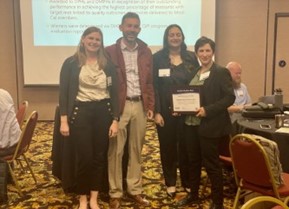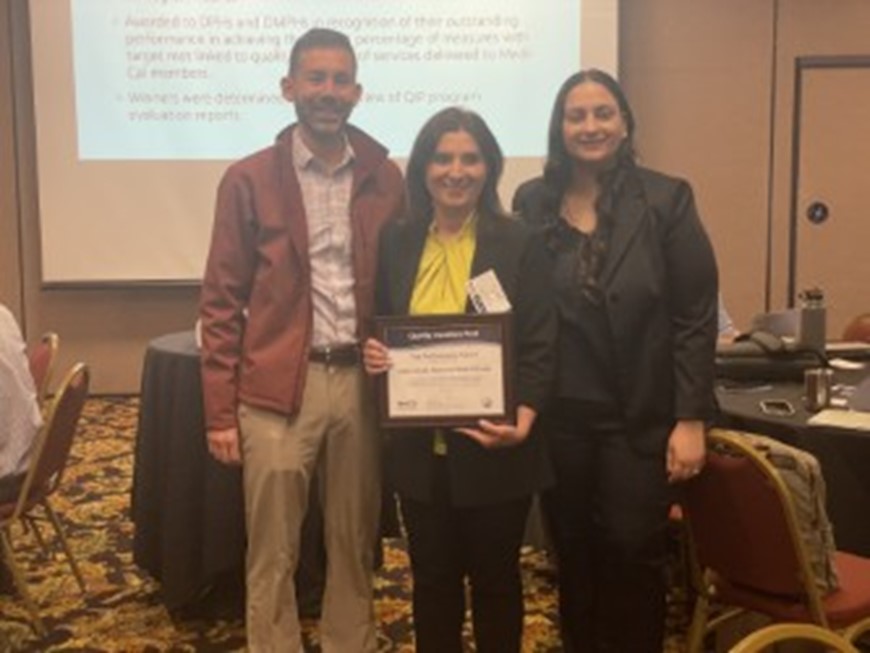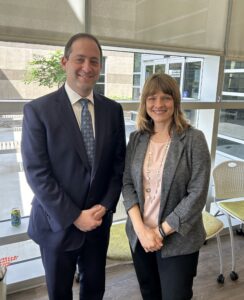 Welcome
Welcome
When we talk with public health care systems and others about quality, many conversations rightly zero in on effectiveness, equity, and safety. But that isn’t the whole picture, as this quote by architect Charles Eames recently reminded me: “The quality of connections is the key to quality.”
In the first half of 2024, we’ve focused on deepening connections between systems and the State; Medi-Cal managed care plans and systems; and system peers.
For systems and the State, the quality conversations have centered on redesigning the Quality Incentive Pool (QIP). This large pay-for-performance program advances quality and provides essential funding for public health care systems. The State unveiled a vision for the redesign of QIP at the Annual QIP Conference in May 2024. Below, you can read about the road to this redesign, the conference, and what’s next.
In another first, SNI convened public health care systems and Medi-Cal managed care plan leaders with our partner, the Local Health Plans of California (LHPC). After the January 2024 in-person meeting, participants walked away with a greater understanding of how much both groups share when it comes to patients, priorities, and quality goals. We’re excited to see how forging closer bonds between systems and plans can enhance patient care. Please scroll down to learn more about this growing collaboration.
System members of SNI’s Racial Equity Community of Practice (CoP) are gaining a deeper understanding of the needs of their systems based on recently completed self-assessments. You can read about how this committed and supportive peer-to-peer community is progressing and what they’re learning about below.
Giovanna Giuliani
Executive Director
California Health Care Safety Net Institute
What’s next for the Quality Incentive Pool
Whether it’s more patients receiving colon cancer screenings or postpartum care, public health care systems strive every day to meet ambitious quality and equity improvement targets that span multiple domains of care. Currently, systems are required to report on 40 measures in the State’s Quality Incentive Pool (QIP) and are paid based on their ability to meet measure targets.
SNI helps members achieve success in QIP by providing measurement and reporting guidance and technical assistance and sharing lessons learned from high-performing systems. We also work closely with the State on QIP, providing feedback from the field and helping to shape potential changes to the program.
Over the last few years, the State proposed changes that would expand the list of measures as part of a QIP redesign. We worked closely with our members to successfully relay their perspectives about adding new measures and how to deliver greater quality and equity of care in an operationally feasible way.
In May 2024, at the QIP Annual Conference, the Department of Health Care Services (DHCS) shared its redesign plans, including a new strategic vision, guiding principles, and six high-level goals, with public and district hospital leaders. The State sought feedback from both on these changes. Systems emphasized the importance of having the needed infrastructure in place before making changes rather than trying to build it at the same time.
To ensure this type of input is considered during the QIP redesign, the State formed a committee, which includes SNI and other hospital leaders, that’s meeting regularly throughout this crucial process. We will continue to be deeply involved in the redesign process so that systems can keep making meaningful quality improvements for patients. If you have any questions, please contact SNI’s chief medical officer, Dr. Ash Amarnath.


Inspiring Others
Recognizing excellence was also on the agenda at the QIP Annual Conference. Three member public health care systems – Ventura County Medical Center, Contra Costa Regional Medical Center, and Natividad Medical Center – received the Top Performance Award from DHCS.
The winners were determined based on achieving the highest percentage of QIP measures with target met and the number of measures improved upon. The department highlighted how these three hospitals maintained clinical quality improvements despite the ongoing impacts of COVID-19.
Supporting Public Health Care System and Medi-Cal Managed Care Plan Partnerships
When 120 public health care system and Medi-Cal managed care plan leaders came together for the first time in January 2024 at an SNI and Local Health Plans of California (LHPC) convening, there were a few key takeaways:
- Joint system-plan quality improvement efforts are underway, but they are in the early stages, with opportunities for growth and further collaboration
- System and plan leaders did not realize the extent of overlap between QIP and the Medi-Cal Accountability Measure Set (MCAS), and that alignment across these important programs is a strong motivator for collaboration
- When systems and plans better understand the policies and external pressures that drive each other’s quality improvement priorities, they can work more effectively together
We expound on these takeaways in this Quick Reference Guide, which details the increasing overlap in QIP and MCAS measure rates and the external drivers for systems and plans. We hope the guide can be useful to both groups in educating staff and supporting local planning.
Next up for the program, SNI and our partner, LHPC Institute, hosts a virtual workshop: Strengthening Partnerships Between Public Health Care Systems and Medi-Cal Managed Care Plans: Shared Vision and Governance today. The session will help system and plan leaders move from a project-based approach to formal, structured partnerships built on mutual trust, executive buy-in, protected resources, and consistent communication.
Assessing equity work and driving change
How do systems score in regards to consistently implementing their health equity work? How can you effectively lead equity work within a system if you’re not an expert? What three ways to bring about and sustain change are often overlooked?
In March and May 2024, system members of SNI’s Racial Equity Community of Practice (CoP) met in person and virtually to address these questions with data-driven tools and new perspectives and methodologies. The content of these learning sessions was aimed at supporting systems as they build and implement their racial equity action plans.
In early 2024, 12 CoP systems completed a health equity organizational assessment created by the Institute of Healthcare Improvement (IHI). The evaluation helped systems evaluate the current state of their equity efforts and guide their strategic equity planning.
Scores from the assessment across the systems were aggregated, shared, and discussed within the CoP. Overall, systems assessed themselves as:
- Below average in response to “people impacted by inequities are directly engaged as key partners in work to improve equity”
- Above average in response to “the organization’s leaders articulate the importance of the health system’s role in dismantling racism and other forms of oppression.”
The discussion of the IHI assessment helped systems identify challenges and opportunities and see where they stand compared to their peers.
Members of the CoP also learned why you don’t need to be an expert to lead equity work at your system (see: from hero to host) and how relationships, information, and identity are as important as strategies, structure, and process when it comes to bringing about and sustaining change.

A new CEO at Arrowhead Regional Medical Center
San Bernardino’s Board of Supervisors appointed Andrew Goldfrach as chief executive officer of Arrowhead Regional Medical Center (ARMC) effective June 1, 2024.
Andrew has served as ARMC’s chief operating officer since 2020 and played a critical role responding to the pandemic as the county’s interim public health director. We look forward to continuing to work with Andrew and welcome him to the board of California’s Association of Public Hospitals and Health Systems. You can read ARMC’s press release about his appointment here.
